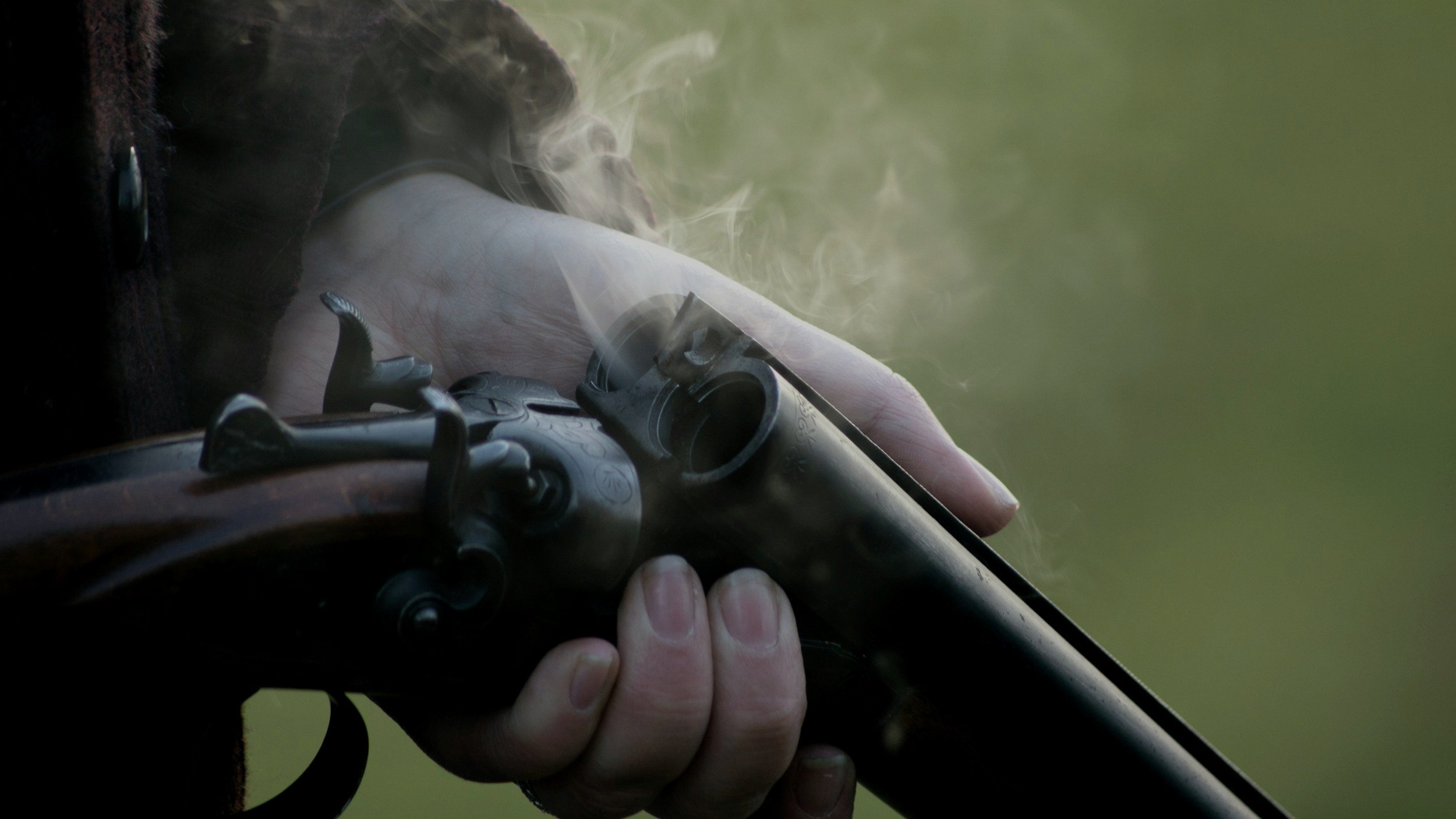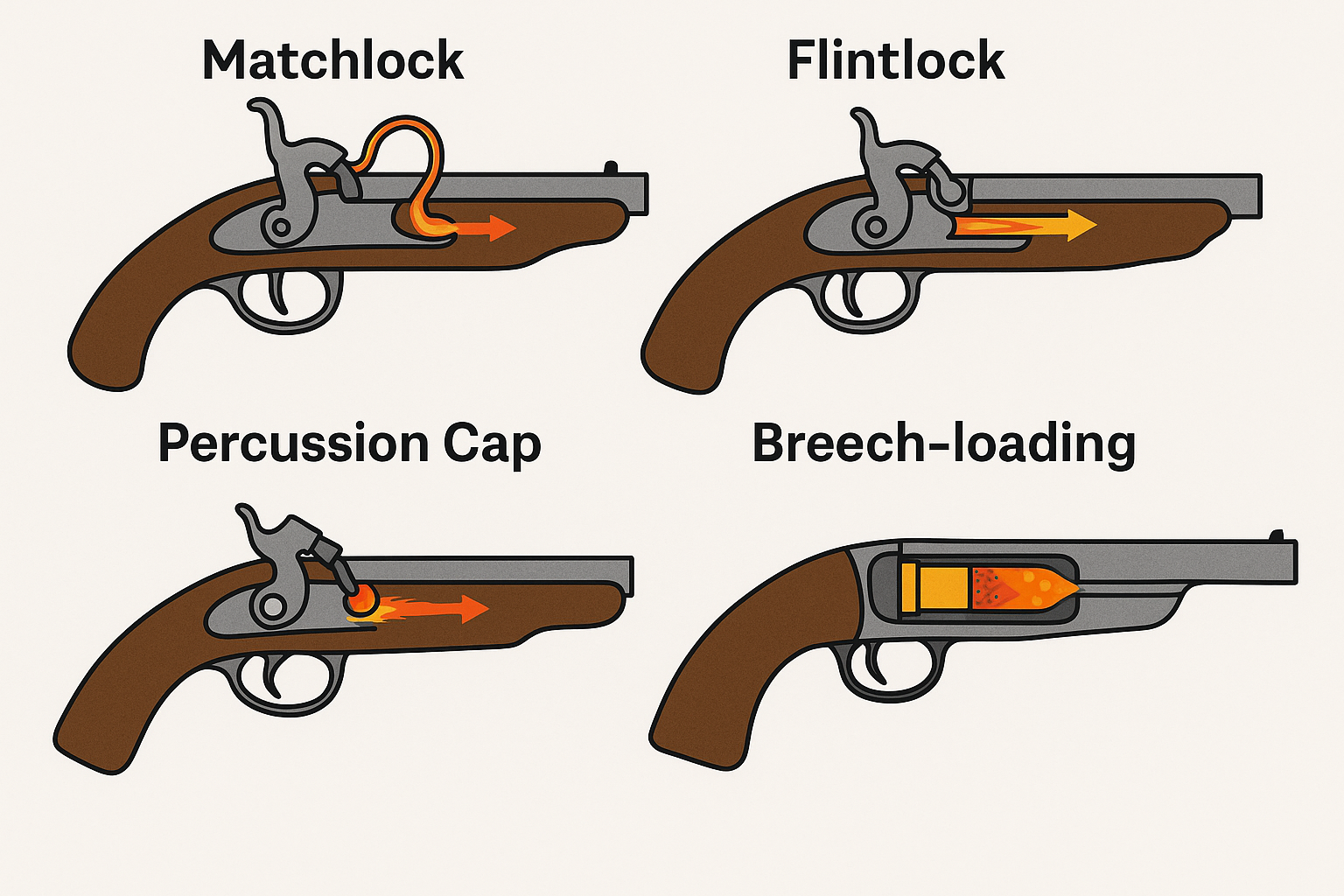A Guide to Shotguns
Introduction
Whether you’re standing on a trap layout or in the countryside on a driven game shoot, one piece of equipment stands out as essential: the shotgun. Designed to fire a spread of pellets (or “shot”), shotguns are incredibly versatile and have played a role in both sport and hunting for centuries.
For clay shooting, shotguns are used to break clays that simulate birds in flight, however in modern times a sporting target can be whatever a course setter wants it to be. From Olympic trap to sporting, different disciplines test a shooter's skill, timing, and gun control. Meanwhile, in game shooting, shotguns are used in live quarry situations, such as pheasant, partridge or grouse drives, requiring a blend of instinctive shooting and fieldcraft.
But not all shotguns are the same and choosing the right type matters. From the traditional side-by-side to the ever-popular over-and-under and the modern semi-automatic, each shotgun offers different qualities and advantages depending on what type of shooting your looking at doing.
In this guide, we’ll explore the history, anatomy, and different types of shotguns, and help you understand what works best for clay and game shooting.
What is the best shotgun for clay and game shooting?
It depends on your discipline, shooting style, and personal preference — this guide will help you choose.
A brief History of Shotguns
The shotgun, in one form or another, has been part of the hunting and shooting world for centuries. Its origins date back to the 16th century, when early firearms were developed to fire multiple projectiles at once. An ideal solution for hitting targets like birds.
The earliest versions were muzzleloaders, loaded from the front and ignited by primitive mechanisms like matchlocks and flintlocks. These guns were slow and often unreliable, but they laid the groundwork for what would eventually become the modern shotgun.
By the 19th century, shotguns had evolved dramatically. Percussion cap ignition replaced flintlocks, improving reliability. Then came the breech-loading system, which allowed shooters to load cartridges from the rear of the barrel, a much faster and safer process. Around the same time, the shotgun cartridge was developed, combining powder, shot, and primer into a single unit.
The Victorian era saw the rise of side-by-side shotguns, especially among British game shooters. These guns were often handmade by renowned gunmakers and became status symbols in the field.
In the 20th century, the focus shifted towards over-and-under shotguns for competitive clay shooting, thanks to their balance and comfort. Meanwhile, semi-automatic shotguns emerged, particularly in the U.S., from wildfowling to tactical use.
Today, shotguns continue to evolve with modern materials, custom fitting, and multi-choke systems, but the core purpose remains the same: a reliable, instinctive firearm for hitting moving targets.
1500s – Smoothbore matchlock muskets emerge
1600s–1700s – Flintlock fowling pieces used for bird hunting
1800s – Percussion cap and breech-loading designs take hold
Late 1800s – Self-contained cartridges invented
1900s – Rise of side-by-side, then over-and-under shotguns
Modern Day – Advances in ergonomics, semi-autos, and competition design
Parts of the shotgun
Parts of a Shotgun
Understanding how a shotgun works starts with knowing its basic parts. While the design can vary depending on the action type (like over-and-under, semi-auto, or side-by-side), most shotguns share a common core structure.
Here’s a breakdown of the essential components:
Barrel(s)
The barrel is where the shot is fired from. Shotguns can have:
Single barrels (common in semi-automatics)
Double barrels either side-by-side or over-and-under
Barrel length affects swing and balance. For trap & sporting disciplines, longer barrels (30–32 inches) help with a more smoother consistent swing, while shorter barrels (28 inches) are often favored for faster disciplines like skeet. All shotgun barrels can range from 28 inches - 32 inches depending on the person.
Stock
The stock is the part held against the shooter’s shoulder. It's critical to both comfort and accuracy. Types include:
Straight stock – often seen on side-by-sides, especially in traditional game guns
Pistol grip stock – more control for clay disciplines and comfort for game shooters
Monte Carlo stock – raised comb for better cheek and sight alignment
Fit is vital, a poorly fitting stock can have you fighting an uphill battle.
Action
This is the heart of the shotgun — where the cartridges are loaded, fired, and ejected. Main types include:
Break barrel – used in over-and-under and side-by-side guns
Semi-automatic – uses gas or recoil to cycle the next shell
Break-barrel shotguns (like over-and-under and side-by-sides) typically feature one of two internal firing mechanisms:
Boxlock
Mechanism is inside the main body of the gun
Strong, simple, and widely used
Cost-effective and reliable
Sidelock
Mechanism is housed on separate sideplates
Offers smoother trigger pulls
Often ornate and found on high-end, traditional guns
Forend
The forend is the part of the shotgun beneath the barrel that the forward hand grips. It helps with stability and swing and often houses the mechanism for opening and re-cocking shotguns. It is more comfortable on an over-and-under shotgun as there is more forend to protect the hand from getting hot from the barrels.
Trigger
Most shotguns have:
Single trigger (modern standard)
Double triggers (especially in traditional side-by-sides)
Some advanced clay guns also include adjustable trigger positions to suit different people's hand sizes.
Chokes
Located at the muzzle end, a choke controls how tightly the shot pattern spreads.
Tighter chokes (Full) = more range, tighter pattern
Looser chokes (Cylinder) = wider spread, better for close targets
Modern shotguns often use interchangeable chokes, allowing shooters to adapt for different targets
Rib and Bead
The rib is the raised section along the top of the barrel(s), aiding sight alignment.
The bead is a small dot at the muzzle — your simple front sight.
Over & Under Shotguns
The over-and-under (O/U) shotgun is the most popular choice today for both clay shooting and game shooting. With one barrel stacked on top of the other, these guns offer excellent balance, consistent pointing, and versatility across disciplines.
Why They’re Popular
Balance & Handling – O/Us tend to sit naturally in the shoulder, with weight distributed evenly over the action. This makes them steady for clay targets and instinctive for game birds.
Adaptability – Most modern O/Us come with multi-chokes, allowing the shooter to adjust patterns for different targets. As well as adjustable stocks to adjust the cast and drop at the comb and heel accordingly.
Clay Shooting with O/Us
Trap: Longer barrels (30–32”) and tighter chokes for distance targets.
Skeet: Shorter barrels (26–28”) with open chokes for close, fast targets.
Sporting Clays: Varied length barrels for distance targets(28–32”) with flexible choke combinations.
Game Shooting with O/Us
Driven Game (pheasant, partridge): 28–30” barrels with ¼ and ½ chokes are common.
Wildfowling: Steel-proofed O/Us with tighter chokes for longer-range waterfowl shots.
Specifications to Consider
Barrel Length – Affects swing speed and stability.
Chamber Size – 2¾” (70mm) is standard, but 3” (76mm) chambers are useful for heavier loads.
Stock Fit – Length of pull, comb height, and cast are vital for accuracy.
Weight – Sporters are heavier for absorbing recoil, while field guns are lighter for carrying in the field.
Summary:
The over-and-under is the go-to choice for most shooters today, thanks to its versatility, balance, and adaptability. Whether on the clay ground or in the field, it provides the confidence and consistency shooters look for.
Side-by-Side Shotguns
The side-by-side (SxS) shotgun is one of the oldest and most traditional shotgun designs. With two barrels sitting next to each other, these guns were the dominant choice for centuries, especially among game shooters in the British countryside. Today, while less common than over-and-unders, they still hold a strong place in shooting heritage.
Why They Were Popular
Tradition & Heritage – Associated with British game shooting, especially driven pheasants and partridge.
Lightweight & Quick to Handle – Often lighter than O/Us, making them easier to carry on long days in the field.
Classic Aesthetics – Slim, elegant lines with beautiful craftsmanship, especially in sidelock designs.
Why They’re Less Common Now
Recoil & Weight – Their lighter build can result in sharper recoil compared to heavier O/Us.
Straight Stock - The straight stock means your hand doesn’t sit as comfortably as a pistol grip
Fixed Chokes – Traditional SxS guns often lack the versatility of modern O/Us with multi-choke
Specifications
Barrel Lengths – Commonly 26–28”, shorter than O/Us, suiting fast, instinctive game shooting.
Chokes – Traditionally fixed, often ¼ and ½, though modern SxS models may offer interchangeable chokes.
Fore-end – Classic traditional fore-end is slimmer, usually meaning the use of a glove is needed for when the barrels get hot
Action Types – Many fine SxS guns are boxlocks. However there are still sidelocks offering ornate engraving and smoother triggers.
Summary:
While the side-by-side has largely been overtaken by the over-and-under for clay shooting and many game disciplines, it remains an iconic choice for traditionalists and collectors. Owning and shooting one connects the shooter to centuries of sporting history.
Semi-Automatic Shotguns
The semi-automatic shotgun (often called a “semi-auto”) is a modern design that uses gas or recoil energy to automatically cycle the action and load the next cartridge. Unlike a break-barrel, you only need to reload after firing multiple shots, usually up to three in the UK due to legal restrictions (2 in the magazine + 1 in the chamber).
Why They’re Popular
Reduced Recoil – Gas-operated semi-autos absorb more recoil, making them softer to shoot than O/Us or SxSs.
Capacity – Hold up to three cartridges (2+1 in the UK), useful pest control.
Practical for High Volumes – Great for pigeon shooting, wildfowling, and rough shooting where lots of shots may be fired.
Durability – Tough, often synthetic designs are suited to harsher conditions.
Drawbacks
Less Traditional – Lack the elegance and prestige of a classic break-barrel action.
Balance – The action design can feel more front-heavy, less instinctive than an O/U.
Ejected Cases – Spend cases are automatically thrown from the gun, which some clay grounds discourage for etiquette reasons.
Cleaning – Gas-operated systems require more maintenance to stay reliable.
Specifications
Barrel Lengths – Usually 28–30”, shorter for fast handling, longer for steady swings.
Chokes – Almost always interchangeable, giving excellent versatility.
Finishes – Options range from traditional walnut stocks to weatherproof synthetic.
Operation – Gas-operated (smoother recoil) or inertia-driven (simpler, cleaner mechanism).
Summary:
Semi-autos are practical, versatile tools — especially suited for wildfowling, pigeon shooting, and rough game where volume shooting is common. While they lack the prestige of an over-and-under, they make up for it in comfort, reliability, and performance.
Steel Shot & Shotgun Capability
With the gradual phase-out of lead shot in many areas over the next few years, understanding whether your shotgun can safely use steel cartridges is essential. Not all guns are designed for it, and using steel in the wrong barrels can be dangerous.
Which Actions Handle Steel Best?
Over & Unders (O/U) - Most modern O/Us are steel-proofed and designed to take high-performance steel, especially recent sporter and field models.
Semi-Automatics - Many modern semi-autos are also steel-proofed, particularly those with 3” or 3½” chambers.
Side-by-Sides (SxS) - Older, lightweight SxSs often cannot handle high-performance steel. Traditional thin barrels make them unsuitable, though standard (non-HP) steel may be possible with open chokes.
What Barrels Can Take Steel?
Choke Considerations:
Standard Steel - safe through ¼ and ½ chokes.
High-Performance (HP) Steel - usually restricted to ½ choke maximum. Full choke is unsafe.
Barrel Wall Thickness: Older, finely made barrels (especially pre-1950s) are often too thin for steel.
Chamber Length: Guns with 2¾” (70mm) chambers may only be suitable for standard steel, not HP loads.
How to Tell if a Gun is Steel-Proofed
Look for proof marks stamped on the barrels or action.
Fleur-de-lys symbol = proofed for High-Performance Steel.
“Steel Shot” or CIP Steel Proof = suitable for standard steel.
Check the chamber length (e.g. 70mm or 76mm) stamped on the barrel.
When in doubt consult a gunsmith before using steel.
Summary:
Modern O/Us and Semi-Autos - usually safe with steel (check proof marks).
Traditional SxSs - treat with caution; avoid HP steel unless specifically proofed.
Always check proof marks, choke restriction, and chamber size before using steel cartridges.
Conclusion
Shotguns have evolved over centuries, from the early matchlocks and flintlocks to today’s finely tuned over-and-unders, versatile semi-automatics, and traditional side-by-sides. Each action type has its place - whether it’s the balance and adaptability of the over-and-under, the practicality and reduced recoil of the semi-auto, or the heritage and charm of the side-by-side.
Choosing the right shotgun ultimately depends on your discipline, quarry, and personal preference. Clay shooters may lean towards longer-barrelled O/Us with multi-chokes for versatility, while game shooters might favour lighter guns suited to the field. Semi-autos offer unbeatable practicality for volume shooting, and side-by-sides continue to appeal to traditionalists who value history and craftsmanship.
With the rise of steel shot, it’s more important than ever to understand your gun’s proof marks, choke restrictions, and barrel specifications. Ensuring your shotgun is suitable for modern cartridges, while also preserving the traditions of the sport.
Final thought: The best shotgun is the one that fits you properly, feels right in the shoulder, and suits the type of shooting you love. Wherever your passion lies - competitive shooting, breaking clays or shooting high birds - there’s a shotgun designed for you.
If you’re thinking about buying your first shotgun — or upgrading to something new — the best place to start is by trying different models at a local shooting ground. A gun that fits you will make more difference to your shooting than any brand name or engraving.
With my years of experience working in the gun trade and selling shotguns, I can offer personal guidance to help you purchase your first shotgun or advise you on upgrading to a model that better suits your shooting style. Whether you’re looking for a reliable field gun, a competition-ready clay gun, or something in between, I can point you in the right direction.
We’d love to hear from you:
Do you prefer the tradition of a side-by-side, the versatility of an over-and-under, or the practicality of a semi-auto? Share your thoughts in the comments below!
Looking for more advice on shotgun fit, clay shooting techniques, or game shooting tips? Stay tuned for our upcoming guides where we’ll cover everything from stock adjustments to choosing the right cartridge for the job.





